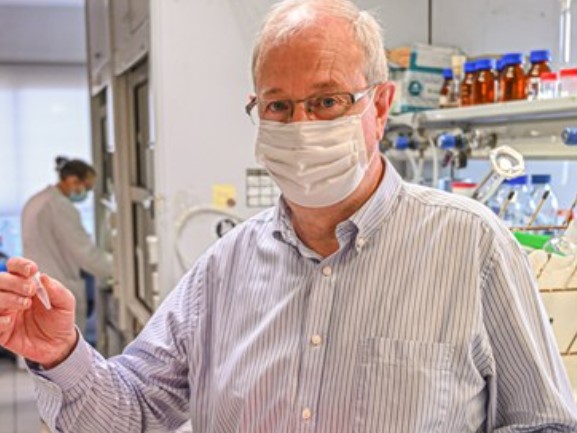A new biosensor will help for the early diagnosis of breast cancer
A team of Spanish researchers coordinated by the professor of the Polytechnic University of Valencia (UPV) and scientific director of the CIBER-BBN and NANBIOSIS unit 26, Ramón Martínez Máñez, and the Valencian oncologist, co-coordinator of the Research Group of Biology in Breast Cancer of the INCLIVA Health Research Institute, of the Hospital Clínico de València, Ana Lluch, also belonging to the CIBER de Cáncer (CIBERONC), has developed a prototype of a new biosensor to help detect breast cancer in its phases earlier. The work has been published in ACS Sensors magazine.
According to the latest data collected by the European Cancer Information System (ECIS), in 2020 a total of 34,088 new cases of breast cancer were diagnosed in Spain, this type of tumor being the most frequent among the women in our country.
Currently, mammography is the most widely used standard technique for diagnosis, but it has some limitations, such as radiation exposure, and lower sensitivity and specificity in young women with dense breast tissue. “For this reason, new diagnostic tools are necessary to help in the early detection of breast cancer. Our biosensor follows this line”, explains Ana Lluch.
The development of this prototype biosensor to aid diagnosis is part of the field of what is known as a liquid biopsy, which, through a blood test, helps detect the presence of cancer. In this case, the mesoporous biosensor developed by the UPV and INCLIVA team is simple to use, inexpensive and offers results in a very short time – between 30 and 60 minutes – from a patient plasma sample.
The biosensor is composed of a nanomaterial -a nanoporous alumina- that facilitates the detection in plasma of microRNA miR-99a-5p associated with breast cancer. Until now, this has been done with complex and time-consuming techniques, which means that they cannot be used as a diagnostic tool in the clinical setting.
Ramón Martínez Máñez explains how the alternative diagnostic system in which they work works: the nanopores of the biosensor are loaded with a dye -rhodamine B- and closed with an oligonucleotide. By interacting with the plasma sample, if it does not detect the presence of the microRNA, the pore doors remain closed; instead, in the presence of miR-99a-5p, those gates are opened and the dye is released. “The change in the release of the dye can be correlated with healthy patients or with breast cancer“, summarizes Martínez Máñez.
Researchers from the La Fe Health Research Institute (IIS La Fe) have also participated in the development of this biosensor, where tests have been carried out for the validation of the new biosensors, and the Cancer Network Biomedical Research Center (CIBERONC) .
“The next step in our work will consist of validation in a larger group of patients and continue working to make the detection system even more robust and easy to use,” conclude Juan Miguel Cejalvo, from the Cancer Biology Research Group of Mama from INCLIVA and Ramón Martínez Máñez.
Reference article:
Iris Garrido-Cano, Luis Pla, Sara Santiago-Felipe, Soraya Simón, Belen Ortega, Begoña Bermejo, Ana Lluch, Juan Miguel Cejalvo , Pilar Eroles, and Ramón Martínez-Máñez. Nanoporous Anodic Alumina-Based Sensor for miR-99a-5p Detection as an Effective Early Breast Cancer Diagnostic Tool ACS Sensors 2021 6 (3), 1022-1029 [DOI]









